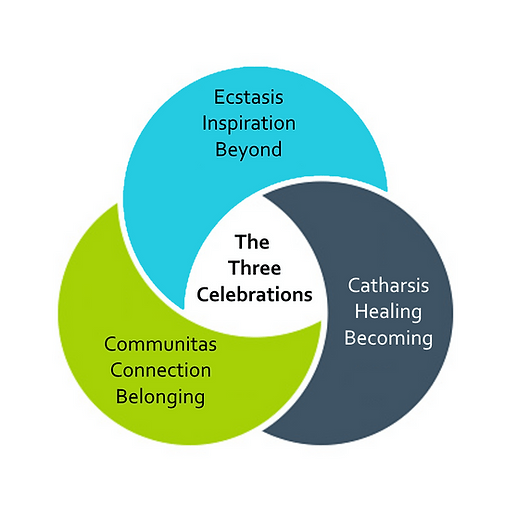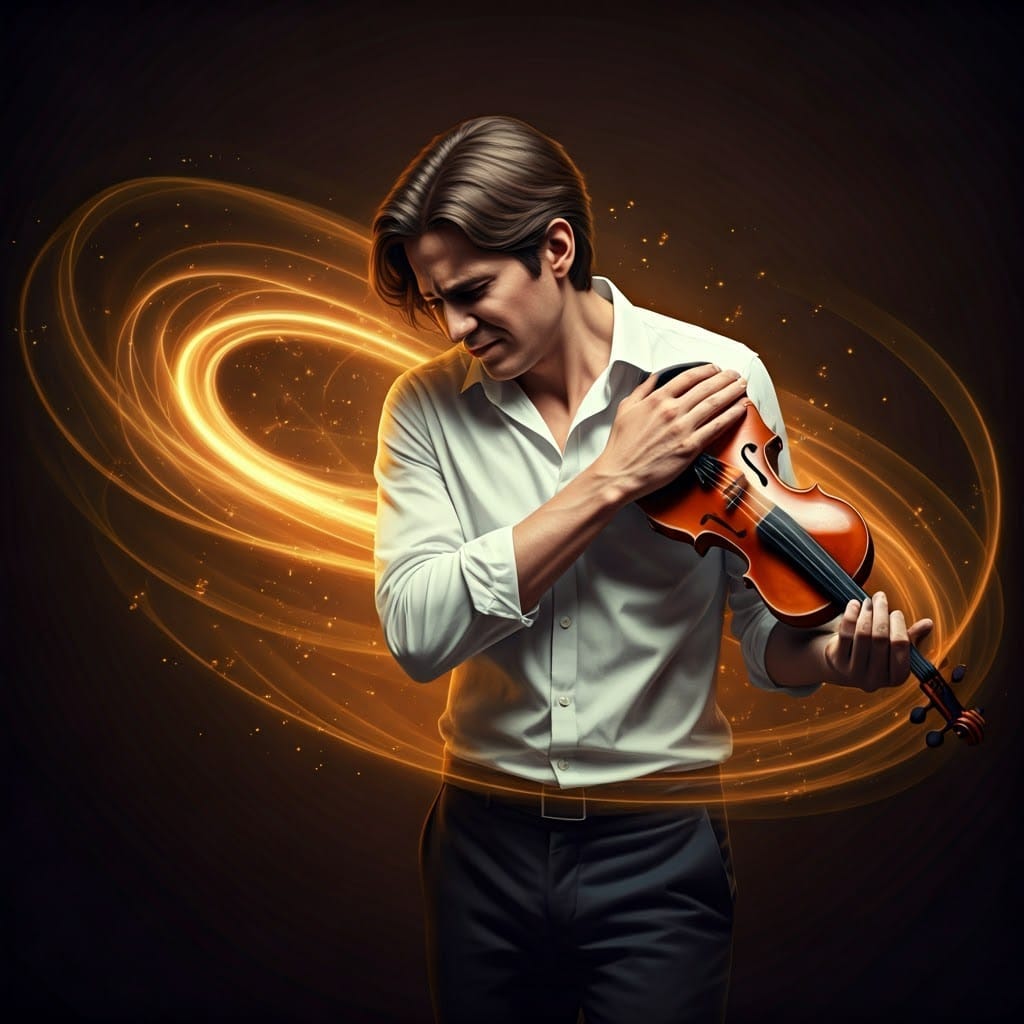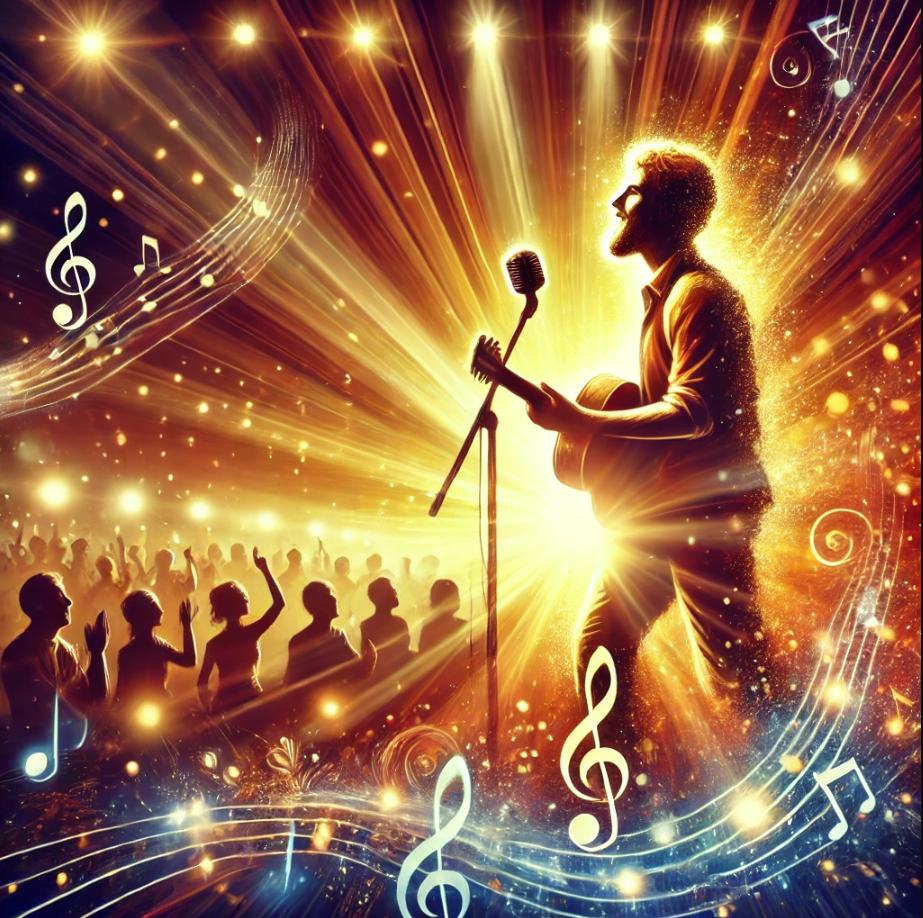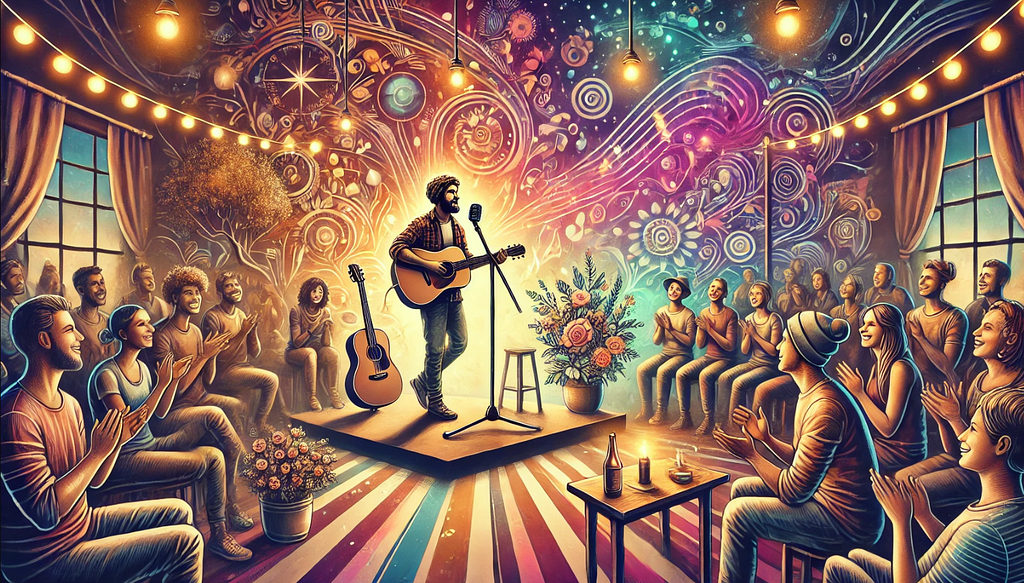One of the essential roles of musicians & other artists is to help humanity celebrate the mystery of life. This activity is central to all human cultures and is responsible for some of the greatest works of art ever made.
These celebrations have taken three different forms: Inspiration, Healing, and Connection. These are the Three Celebrations. They are the specific avenues through which the transformative energy of the arts takes place.
This video features an excerpt from Chapter 3 “The Soulforce Arts Approach” from my upcoming book. Read the full excerpt from this video below.
My video on Moments of Truth: https://youtu.be/MJInWRzKOeQ
Featured quote from interview of John Anthony West on Joe Rogan: Episode #266
Be among the first to know about my upcoming book “Soulforce Arts: The Vital Role of Musicians & Other Artists in a World That’s Lost Its Mind” by signing up for my mailing list
Joseph Arnold Violinist, Alexander Technique Teacher, Director of the Soulforce Arts Institute
The Three Celebrations
“Life itself is a magical recreation of the genesis of the universe, and by celebrating in certain ways humans are reliving the cosmic process of the universe and can thereby access the divinity that is responsible for us being here.”
– John Anthony West
Art is essentially a celebration of the mystery of life. All throughout history and across the globe, humans have found ways of celebrating the universe and their place within it, the results of which have been some of the greatest works of art ever made. Understanding the traditional forms these celebrations have taken can greatly aid your ability to contribute to this essential human activity.
While such celebrations have taken countless specific forms across cultures and time periods, the Sacred Design Lab of the Harvard Divinity School has discovered three essential avenues for celebration common among all societies and time periods: Beyond, Becoming, and Belonging. The Ancient Greeks had their own terms for these: ecstasis, catharsis, and communitas. In plain English, these are inspiration, healing, and connection. These are the Three Celebrations. They are the essential ingredients for human flourishing, and are the specific avenues through which moments of truth take place. And each has an essential role in the arts.
The Three Celebrations are the specific avenues through which moments of truth take place. They are ecstasis (inspiration), catharsis (healing), and communitas (togetherness).

Ecstasis. Ecstasis is an experience of awe, inspiration, or fulfillment. It is an answer to the monotonous grind of daily life, and the feeling that, “Life’s a bitch and then you die.” Ecstasis is a moment of connection with something bigger than yourself that puts things in perspective and gives you a reason for going on.
Ecstasis is a peak state, a temporary, yet intense feeling of flow, or being in the zone. This state is so powerful and pleasurable that people throughout history, from spiritual seekers to high-performance athletes, have gone to extreme lengths to experience it again and again. Flow researcher and University of Chicago professor Mihaly Csikzentmihaly put it this way: “There are moments that stand out from the chaos of everyday life like shining beacons. In many ways, one might say that the whole effort of humankind through millennia of history has been to capture these fleeting moments of fulfillment and make them a part of everyday existence.”
The arts have played a crucial role in delivering an experience of ecstasis to both artists and audiences alike. When you step into the hush of a cathedral and feel a connection with something sacred, when the swelling of an orchestra threatens to sweep you away, or when you get so lost in a film that you don’t even remember to breathe–this is ecstasis. And as an artist, when you are immersed in the rush of a performance, when a new creative insight hits you like a lightning bolt, or when you put down your pen and realize that hours have gone by without you noticing–this is ecstasis, too.
In The Rise of Superman: Decoding the Science of Ultimate Human Performance, author and flow expert Steven Kotler writes that there are three main benefits to cultivating ecstasis, all of which are relevant for artists. Firstly, ecstasis provides powerful intrinsic motivation; when you reach a state of flow in your creative process, you’ll be so immersed in enjoying what you’re doing that you won’t want to stop. Secondly, ecstasis actually speeds up your learning processes to such a degree that it can cut the path to mastery in half. Thirdly, it just feels great! According to Kotler, the people who experience the most ecstasis are among the happiest on earth.
Practice 3.3 – Reflection – Attuning to Ecstasis
Call to mind any memorable experiences of awe, inspiration, or fulfillment in your artistic life. What are the times you’ve experienced ecstasis as an audience member? Or while in the creative process yourself? Write a few sentences in your journal about what you felt, did, and thought during those moments. Then, keep these memories in mind as you go about your creative activities this week so that you can become more and more attuned to ecstasis.
Catharsis. Catharsis is a moment of healing, unburdening, or regaining your wholeness. It is an answer to the “slings and arrows of outrageous fortune”; a profound relief from traumas of all kinds, ranging from the chronic stress endemic to our society all the way up to full-blown PTSD.
From relaxing sound baths, to the medicinal use of the Aboriginal didgeridoo, to the participation in a trance dance that leaves you feeling at once emptied out and full again, the healing power of music and the arts has long allowed us to transform our suffering into something profound. To illustrate the kind of healing that is possible, here is an account from a woman who attended a musical concert:
…it was the quality of perfection that I heard in your music that felt like it “slayed” me in some way and left me feeling completely hollowed out. It was so devastating that I even felt anger towards you both [the performers] for a while that this had happened to me, but mostly I just felt intense grief… At the intermission I left and went back to my room, where the process of healing continued, and when I woke up the next morning I felt like a new person.
It has now been a couple weeks since that night, and I wanted to share with you where I am now. For starters, the insomnia that has plagued me for many, many years is now almost completely gone. It’s like that night gave me a reset to my whole nervous system, because I feel calm and peaceful now even in the face of things that used to unsettle me. This is what happens when trauma heals in the body, and that is what happened to me from my experience at that performance. It also feels like my ego went through a transformation where it is now more aligned with the goals of my Soul, because I do not find myself “taking the bait” anymore when people act in a way that would normally really trigger me. My husband has noticed this change, as well as other close family members, so I am getting affirmation from outside myself, as well.
This is catharsis, the power of the arts to heal.
Practice 3.3 – Reflection – Attuning to Catharsis
Call to mind any memorable experiences of healing, unburdening, or regaining your wholeness in your artistic life. What are the times you’ve experienced catharsis as an audience member? Or while in the creative process yourself? Write a few sentences in your journal about what you felt, did, and thought during those moments. Then, keep these memories in mind as you go about your creative activities this week so that you can become more and more attuned to catharsis.
Communitas. Communitas is a feeling of togetherness, belonging, or group flow. It is the answer to the fragmentation of our communities and the experience of isolation and loneliness that is so widespread in our society. Communitas is the sense that other people have your back, that you’re loved and wanted, and that we’re all in this together.
Communitas provides a necessary sense of togetherness for audiences. For example, it is what draws tens of thousands of people to rock concerts and electronic dance music festivals every year. These events are wildly popular precisely because they offer an immersive, cathartic experience that gives people a rich sense of flow and connection. Keith Sawyer at the University of North Carolina at Chapel Hill calls this experience “group flow,” and says that it is so pleasurable and powerful that it is up to three times as rewarding as an isolated peak experience.
Communitas is also a vital part of what makes for meaningful experiences as an artist. It’s the experience of group flow that happens when you work towards a worthy goal alongside others. Communitas happens when your own individual creativity and decision-making merges with a collective intelligence; in other words, where you feel that the whole is more than the sum of the parts. For example, imagine that you’re taking part in a theater production. You and the other cast and crew members have been working closely together for several months now. You’ve made it through “hell week” together, and the jitters of opening night are behind you. As the play begins, you can feel that you’re really hitting your stride now, and there is an effortless flow on stage. You and the other cast members seem to be able to read each other’s minds. And at the end of the performance, during the final bows, you look around, your heart swells, and feel a delicious and timeless sense of camaraderie and closeness with all your peers. This is communitas.
Practice 3.4 – Reflection – Attuning to Communitas
Call to mind any memorable experiences of togetherness, belonging, or group flow in your artistic life. What are the times you’ve experienced communitas as an audience member? Or while in the creative process yourself? Write a few sentences in your journal about what you felt, did, and thought during those moments. Then, keep these memories in mind as you go about your creative activities this week so that you can become more and more attuned to communitas.
Author Frederick Buechner said that your life’s purpose is “the place where your deep gladness and the world’s deep hunger meet.” The Three Celebrations are the direct path to that very place. When you cultivate ecstasis, catharsis, or communitas, you will simultaneously be reaching the place where your greatest well-being, joy, creative fulfillment, and artistic mastery meet the deep hunger your audiences have for these very qualities.
There are countless ways to reach this magical place. And as always, this process begins with you. The first step to cultivating the Three Celebrations in your art is to notice your own needs for inspiration, healing, and togetherness. Where are these needs being met? Where are these not being met? The more you become sensitized to your own needs, the more you’ll be able to make informed artistic choices; choices that will allow you and your art to become a medium by which powerful experiences of inspiration, healing, and togetherness can occur for both you and your audiences.




